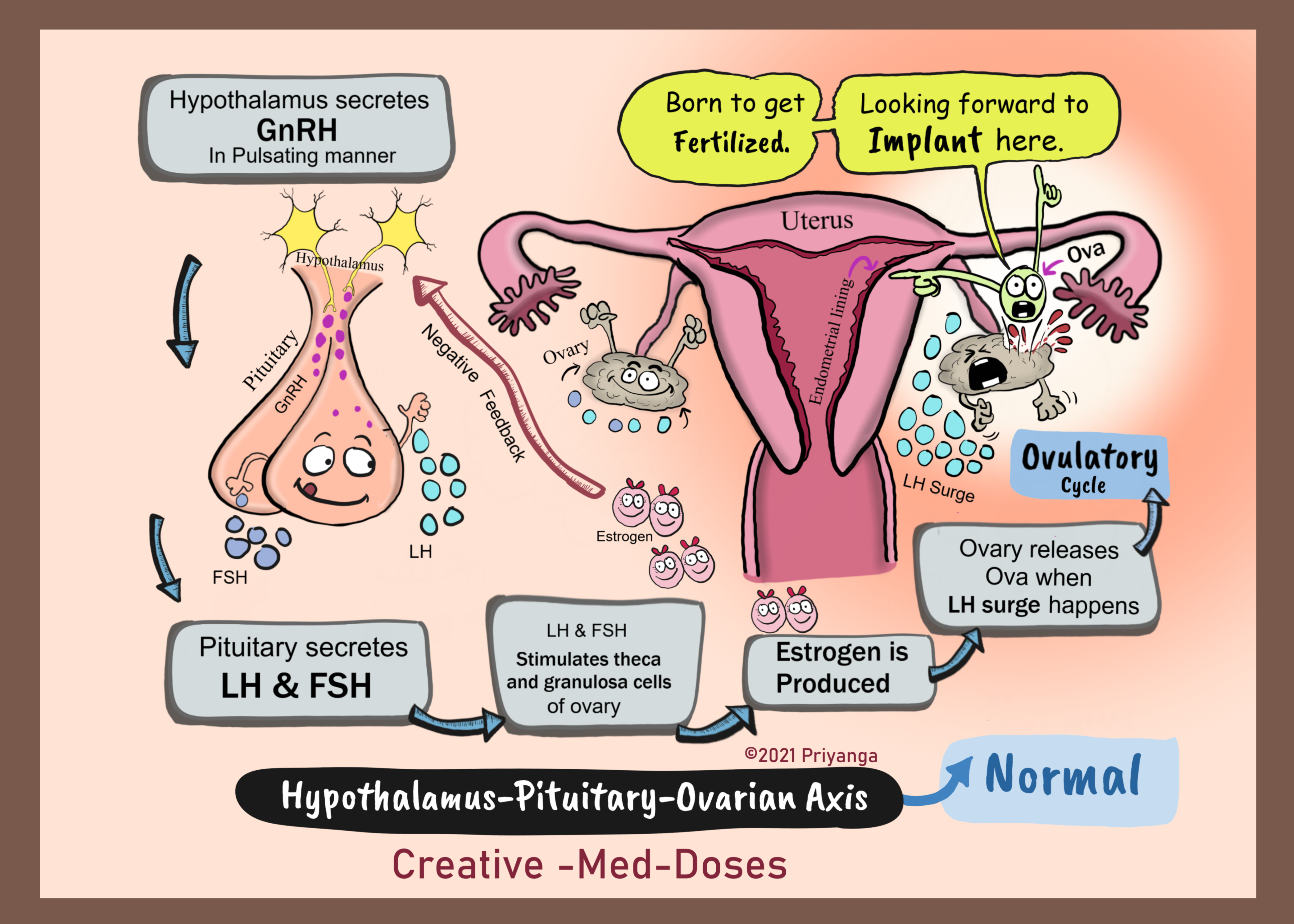Hypothalamic-Pituitary-Ovarian axis
Hypothalamic-pituitary-ovarian (HPO) axis is as an entity that works in concert to allow for procreation through cyclic production of gonadotropic and steroid hormones.
The human ovaries normally produce a single dominant follicle that results in single ovulation each menstrual cycle.
Folliculogenesis in mammals is a highly selective process only a few follicles become dominant and later on ovulate.
The ovulation process is regulated by gonadotropic hormone (FSH/LH) levels.
This cycle is tightly regulated to select a dominant follicle for ovulation, meanwhile priming the endometrium for implantation.
The ovary plays a pivotal role in the production of steroid hormones necessary for follicular development and oocyte maturation.
It contains a finite number of oocytes that a woman will have for the span of her reproductive life and influences the hormonal milieu required for oocyte maturation and fertilization. This complex regulation can be negatively impacted when pathologies occur within any juncture of the HPO axis.
Hypothalamic-pituitary-ovarian (HPO) axis has three components –
Hypothalamus – It is located at the base of the brain, above the brainstem. It secretes gonadotropin-releasing hormone (GnRH).
Pituitary – it is located in the base of the skull just below the hypothalamus, and pulsatile release of GnRH from the hypothalamus stimulates the secretion of Follicle-stimulating hormone (FSH) and luteinizing hormone (LH).
Ovaries- FSH and LH from the pituitary stimulates granulosa cells and theca cells of the ovaries to secrete estrogen and progesterone. Excess in estrogen causes negative feedback and causes inhibition of GnRH release from the hypothalamus.
FSH stimulates primordial follicles to mature by acting on granulosa cells, the fall in FSH causes the selection of dominant follicles. The follicles which have the highest number of FSH receptors get more concentrated FSH micro-environment and thus they grow faster and become dominant follicle one of these dominant follicles releases ova every month. Only one of the maturing follicles can dominate over the others. It is called the Graafian follicle.
The Granulosa cells of these follicles produce estrogen which stimulates the hypothalamus to secrete GnRH. There is LH and FSH surge 24 hours before ovulation, this surge causes Graafian follicle to release ova. This phase of the reproductive cycle, from FHS release until ovulation, is called the follicular phase.
After ovulation, the ruptured follicle becomes the corpus luteum. In addition to producing estrogen, it also produces progesterone. Progesterone stimulates the uterine endometrium’s secretory functions and signals the hypothalamus to stop producing GnRH. This, in turn, deactivates FSH and LH production.
Inhibition of the hypothalamus-pituitary ovarian axis
Oral contraceptive pills work by mimicking pregnancy with high progesterone content. They inhibit the secretion of GnRH from the hypothalamus which causes inhibition of secretion of FSH and LH from the pituitary gland.
Other forms of HPG axis inhibition include:
- Continuous use of a GnRH agonist that gives negative feedback to the hypothalamus.
- Administration of a GnRH antagonist
...

...
Revision for today Neuropathic arthropathy: Charcot arthropathy - Creative Med Doses
Buy fun review books here (these are kindle eBook’s you can download kindle on any digital device and login with Amazon accounts to read them). Have fun and please leave review.